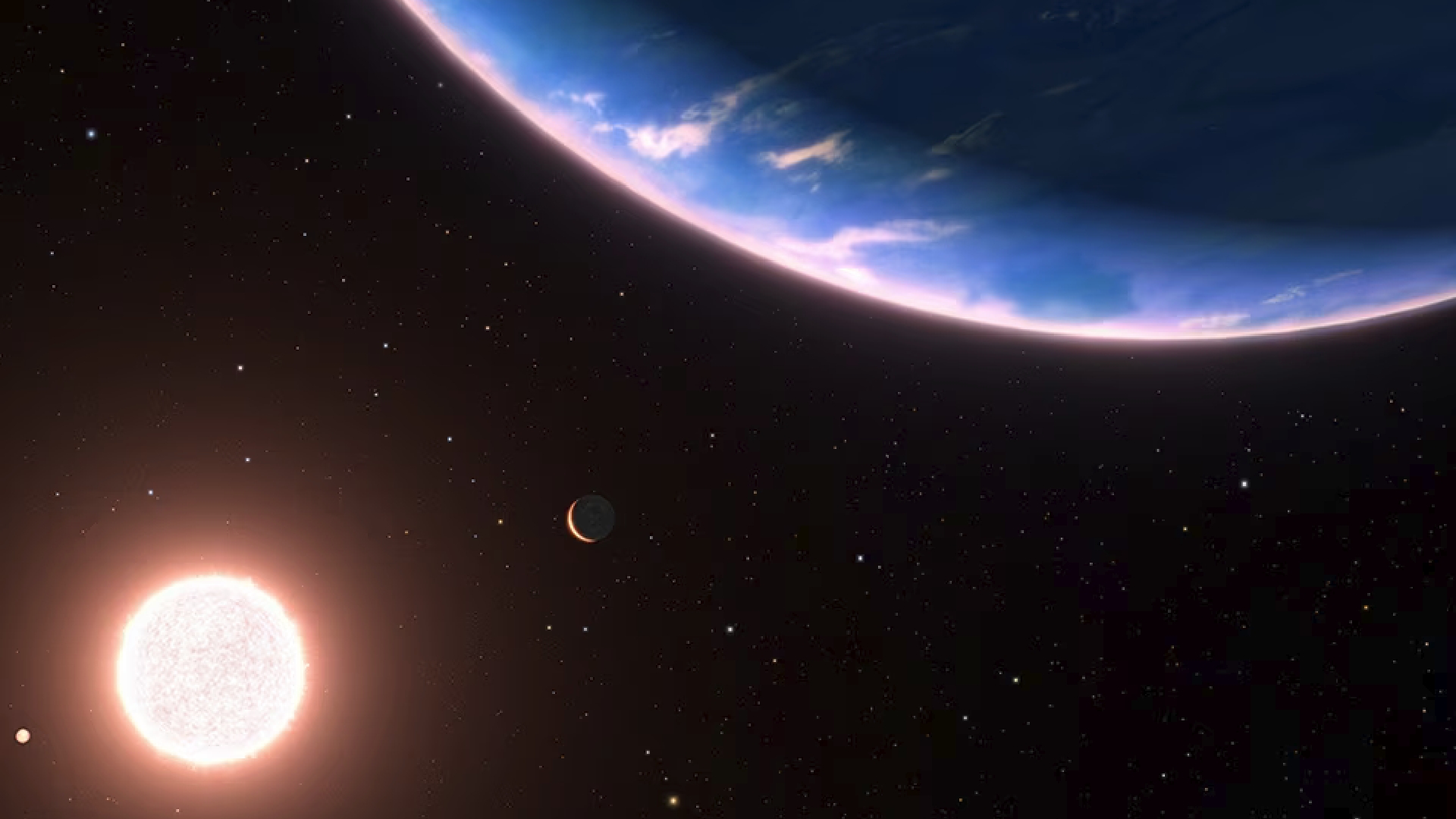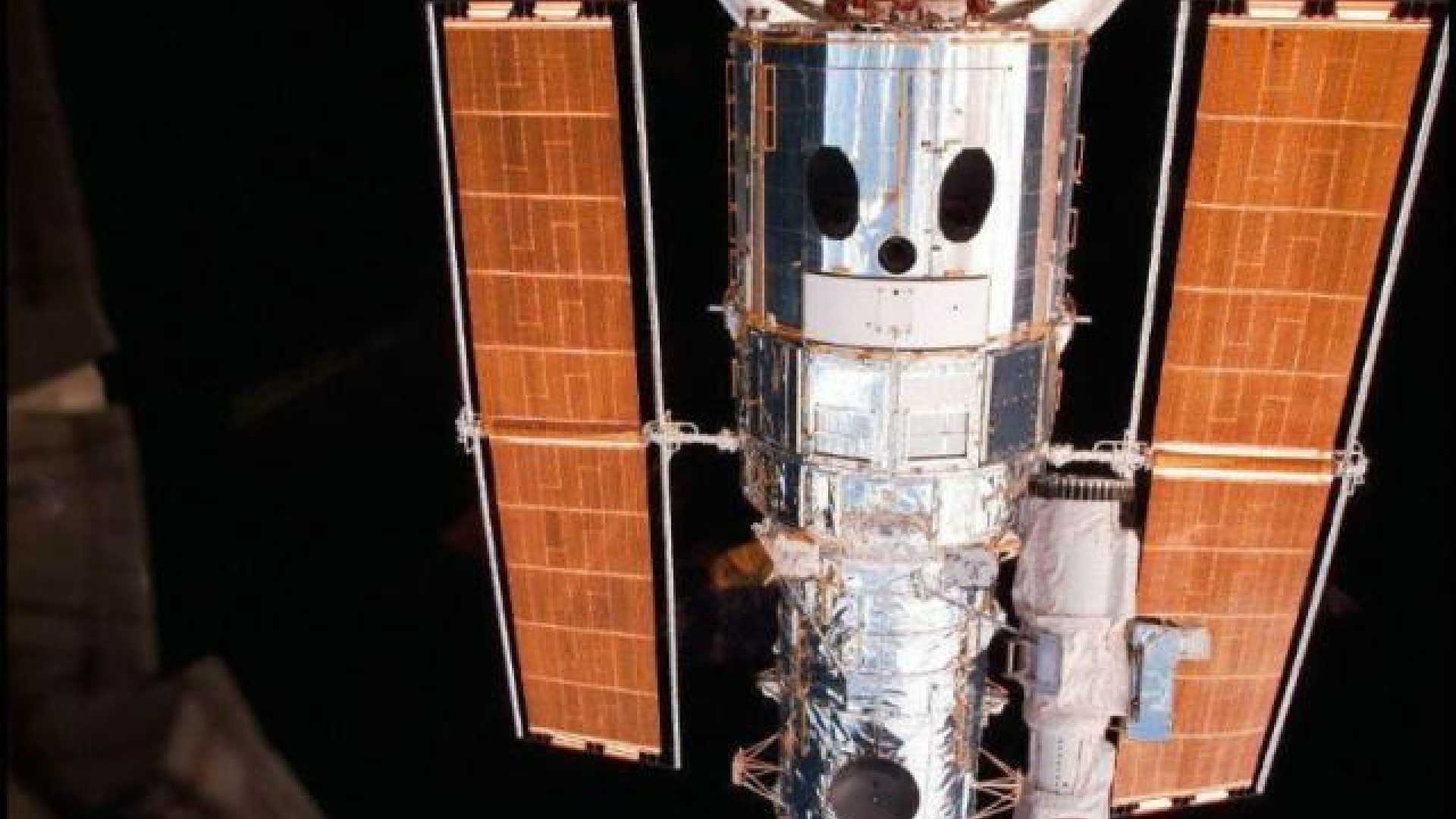Hubble discovers water vapor in the atmosphere of a tiny planet

Water vapor has been found in the atmosphere of GJ 9827d, the tiniest exoplanet, by NASA's Hubble Space Telescope. An important step towards comprehending the diversity and abundance of atmospheres on rocky planets, this discovery may point to possible water-rich worlds with atmospheres in other stars. The finding advances the description of worlds that resemble Earth.

It is yet too early to determine, though, whether the planet's atmosphere is primarily composed of water, left over from a primordial hydrogen/helium atmosphere that evaporated under the influence of stars, or whether Hubble spectroscopically detected a tiny quantity of water vapor in a puffy hydrogen-rich atmosphere.
"Our observing program, led by principal investigator Ian Crossfield of Kansas University in Lawrence, Kansas, was designed specifically with the goal to not only detect the molecules in the planet's atmosphere, but to actually look specifically for water vapor. Either result would be exciting, whether water vapor is dominant or just a tiny species in a hydrogen-dominant atmosphere," said the science's paper lead author,Pierre-Alexis Roy of the Trottier Institute for Research on Exoplanets at Unversite de Montreal
"Until now, we had not been able to directly detect the atmosphere of such a small planet. And we're slowly getting in this regime now," added Benneke. "At some point, as we study smaller planets, there must be a transition where there's no more hydrogen on these small worlds, and they have atmospheres more like Venus (which is dominated by carbon dioxide)."
With an atmosphere primarily composed of water vapor, the planet—which is 800 degrees Fahrenheit hotter than Venus—would undoubtedly be an arid and humid place.
There are currently two options available to the team. One possibility is that the planet is still hanging on to a water-laced, hydrogen-rich atmosphere, resembling a miniature Neptune. Conversely, it might be a warmer Europa, the moon of Jupiter, which has twice as much water under its crust as Earth. "The planet GJ 9827d could be half water, half rock. And there would be a lot of water vapor on top of some smaller rocky body," Benneke speculated.

A planet with a remnant water-rich atmosphere has been found by the Hubble Space Telescope, indicating that the planet formed closer to its host star. The planet, whose starlight is filtered via the atmosphere and bears the spectral fingerprint of water molecules, was discovered during 11 transits spread over a period of three years.
The finding makes it possible for NASA's James Webb Space Telescope to investigate these kinds of planets in the future. With additional infrared observations, the telescope can see more, including molecules that include carbon, such as methane, carbon dioxide, and carbon monoxide. Every 6.2 days, the planet GJ 9827d completes its orbit around a red dwarf star.
Via NASA
